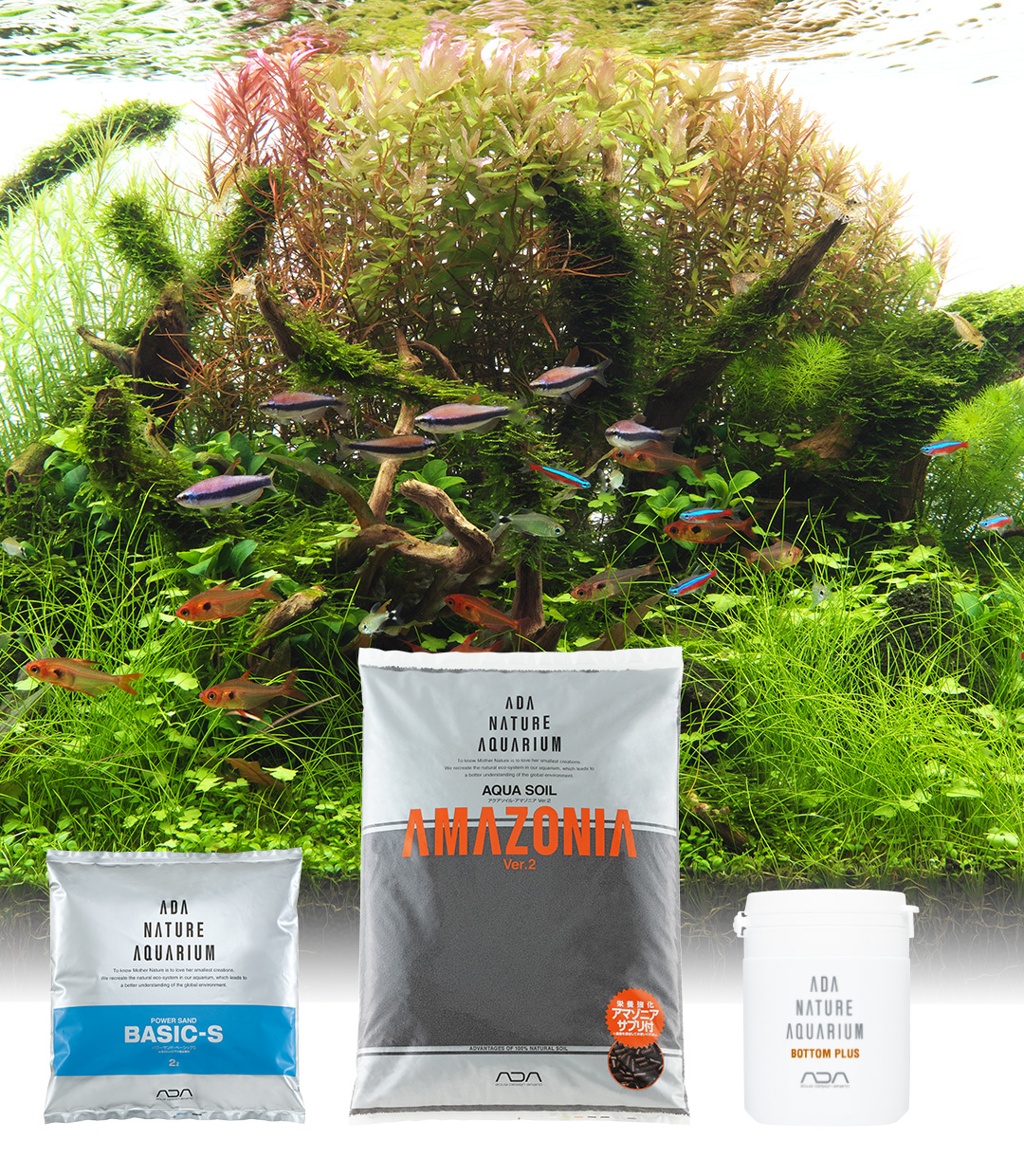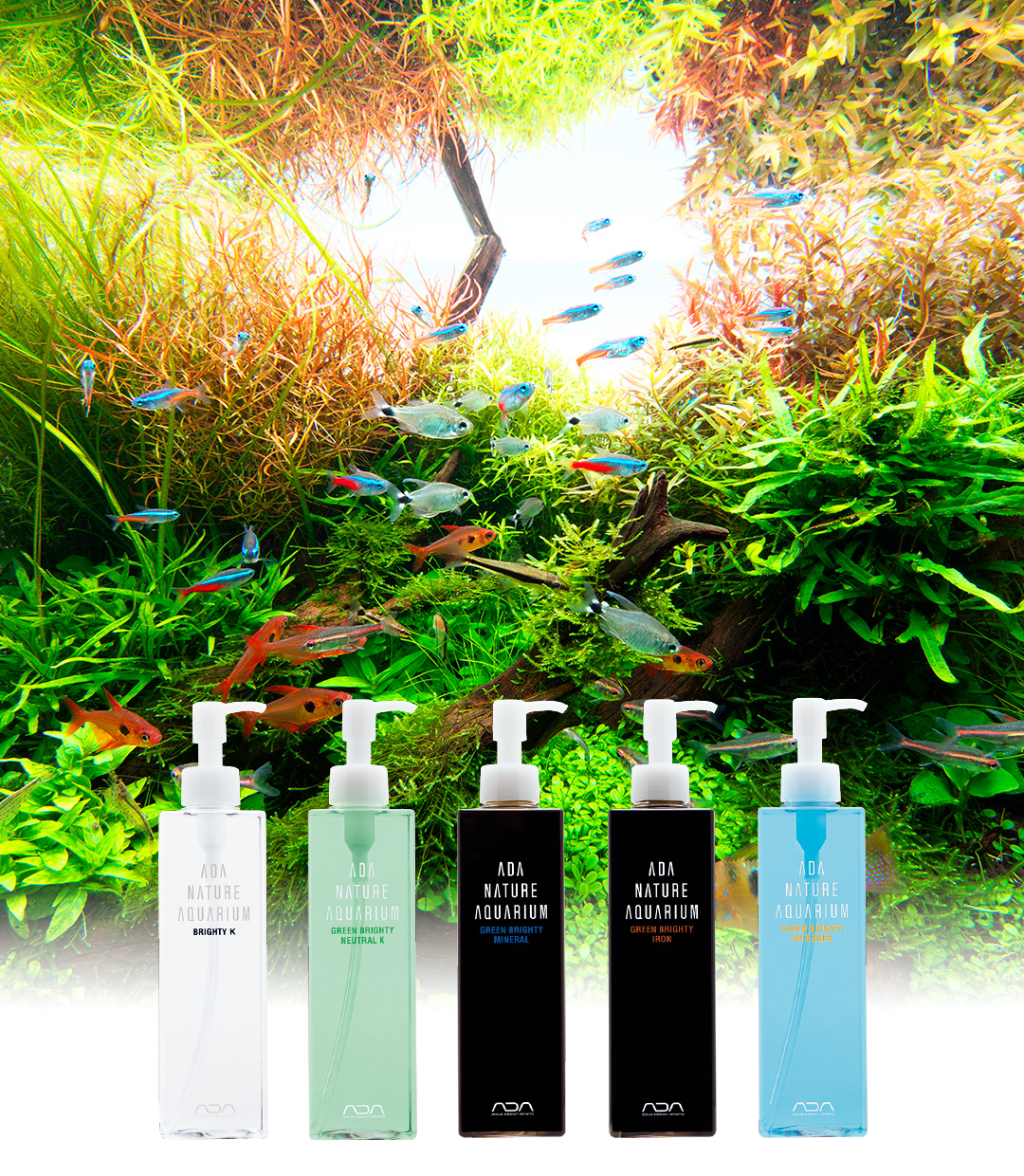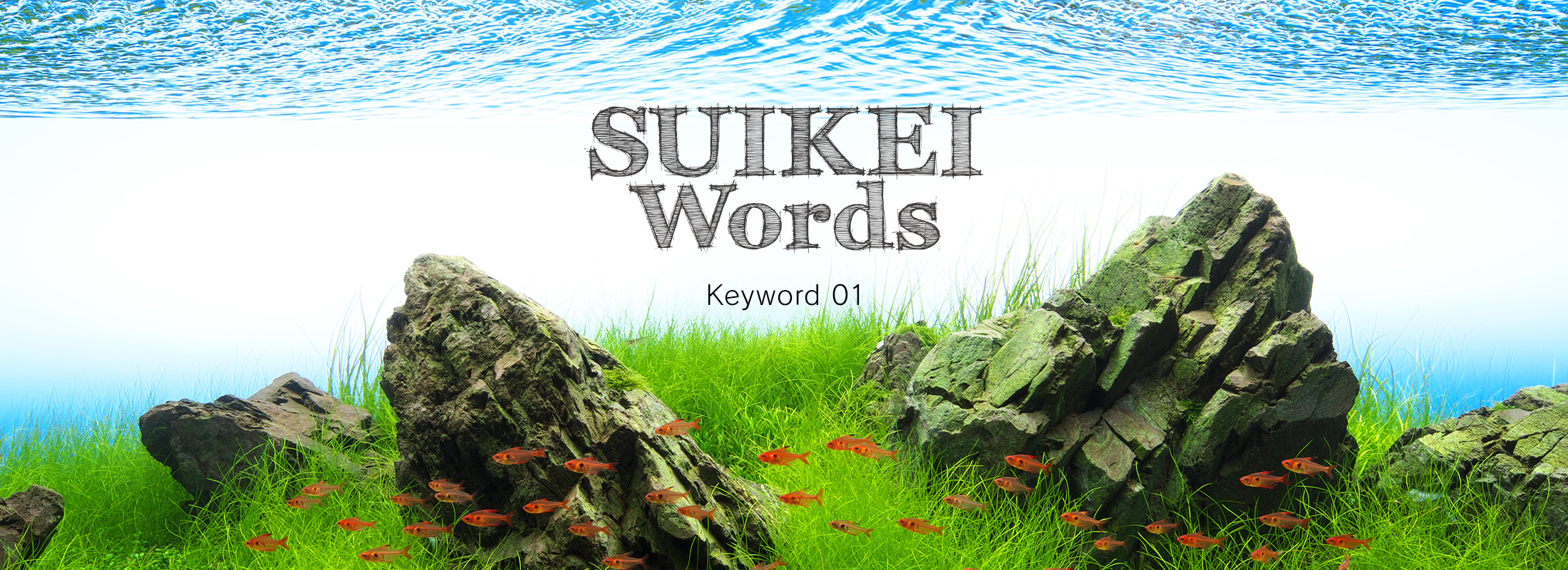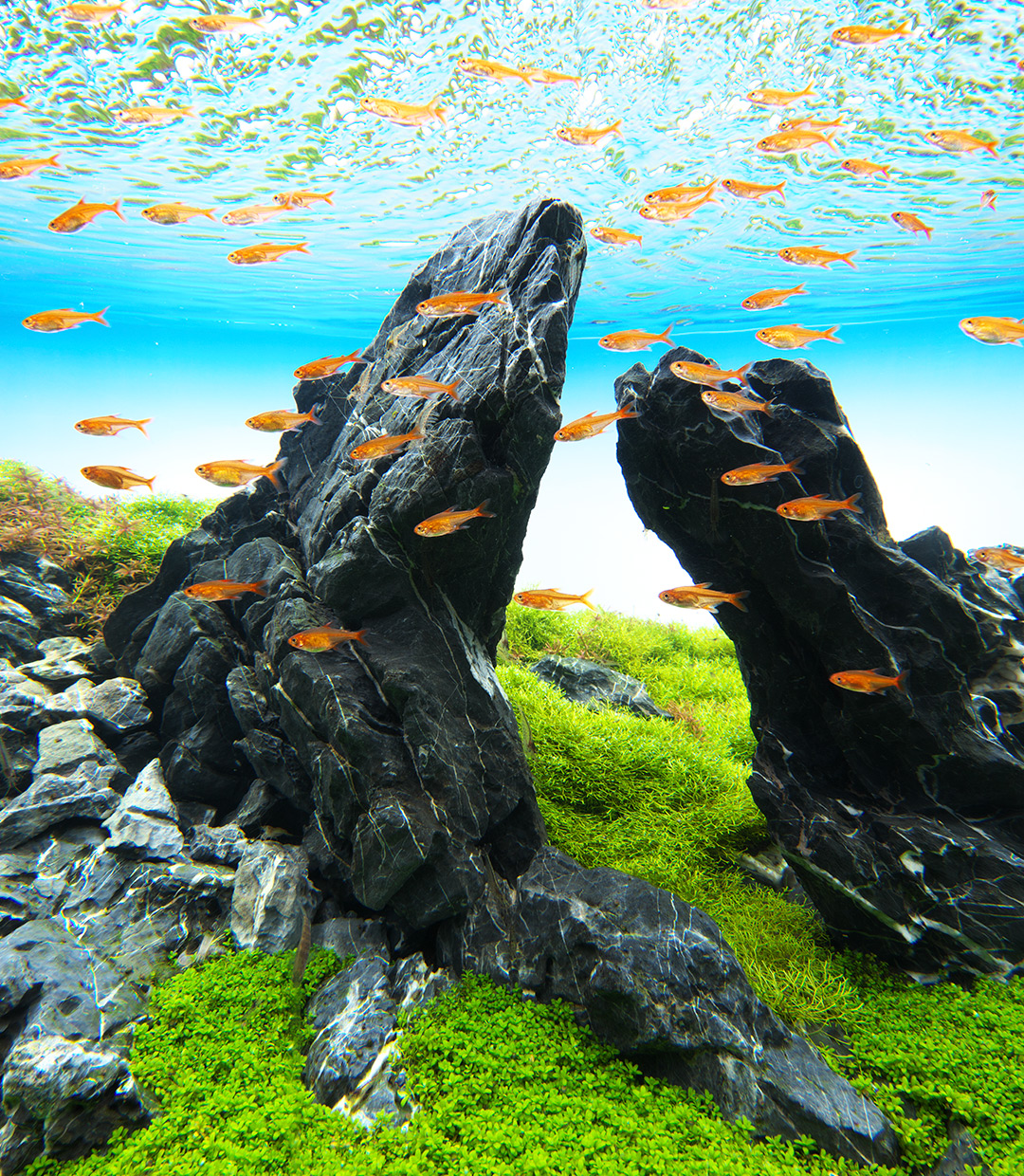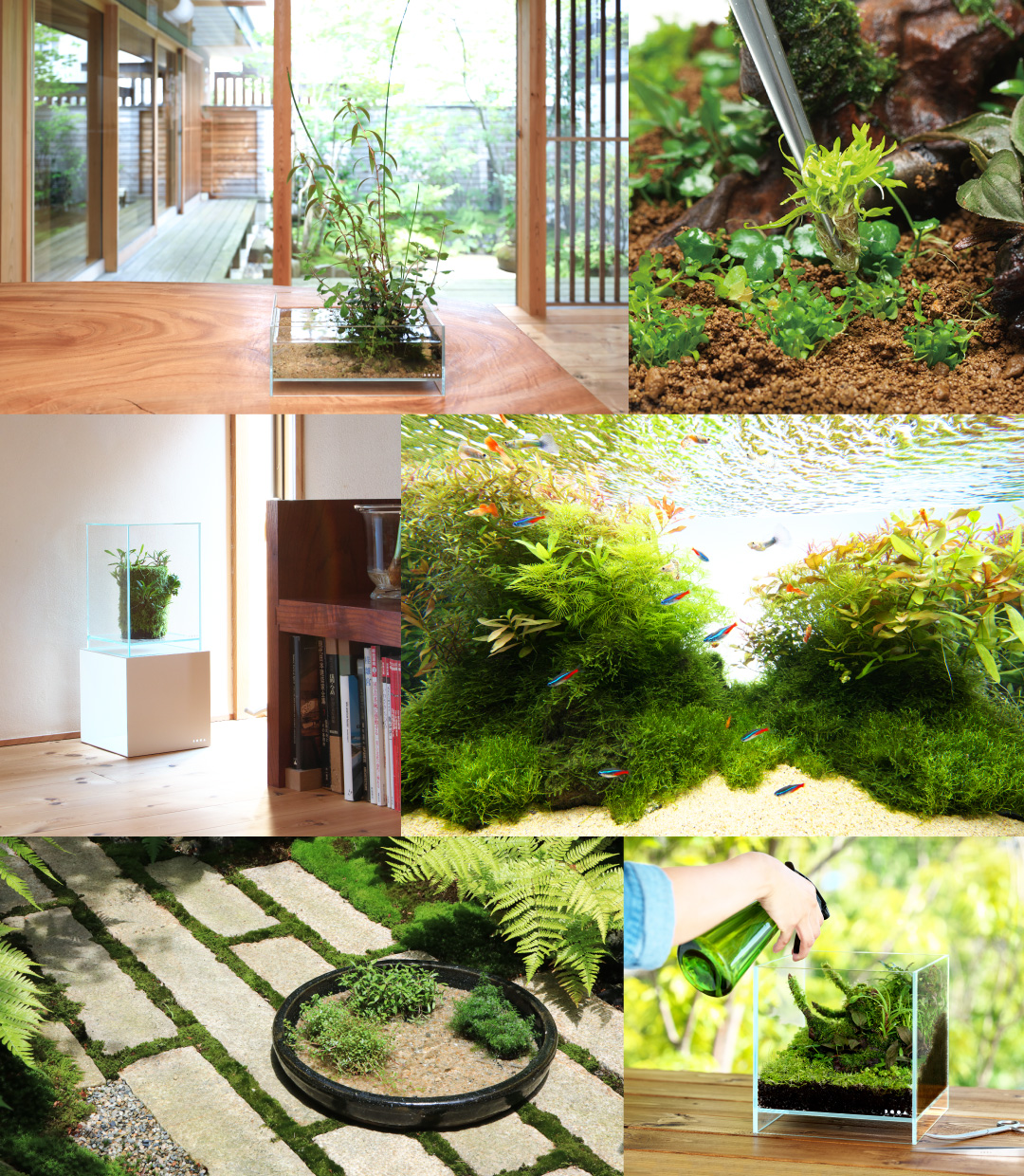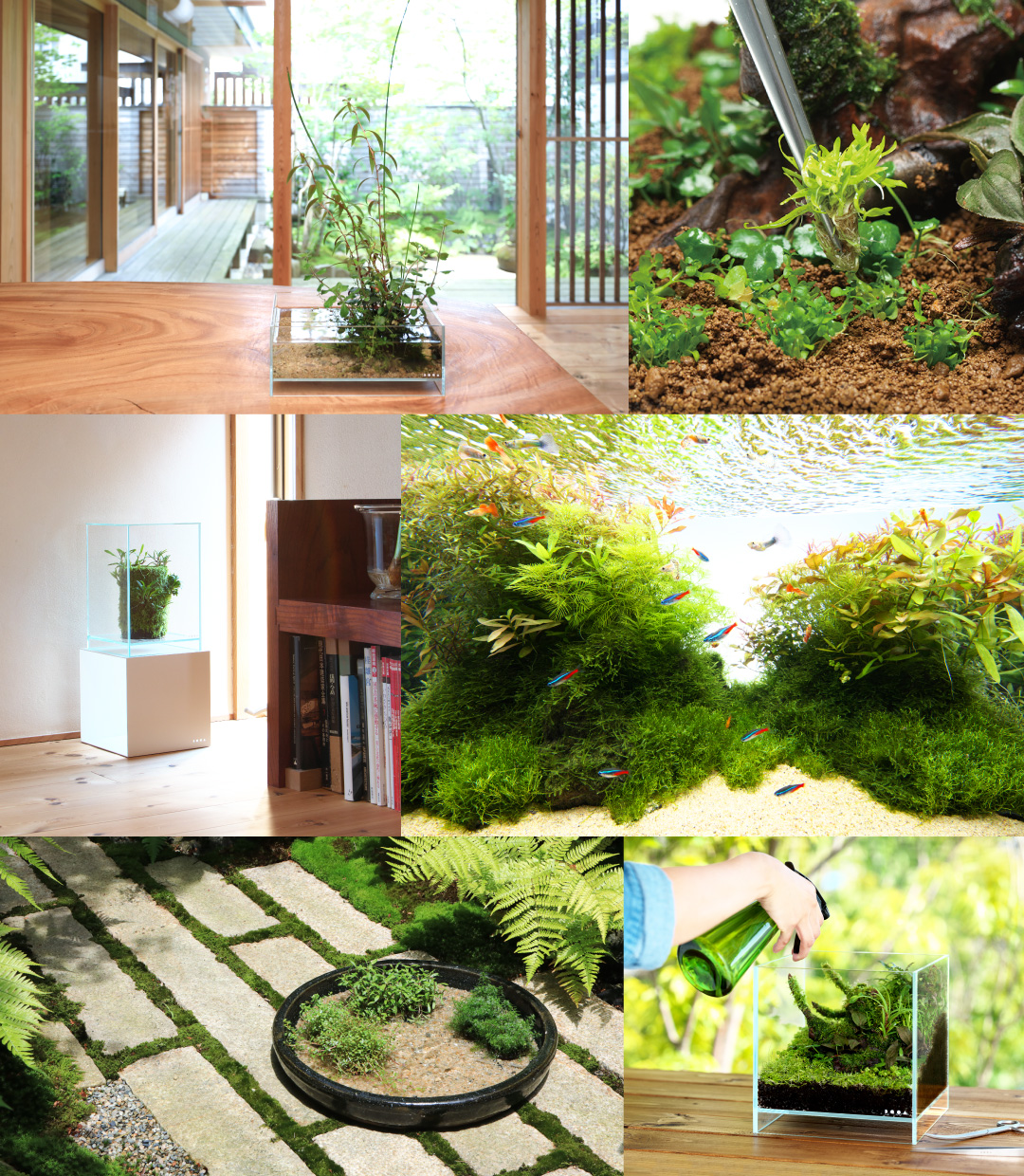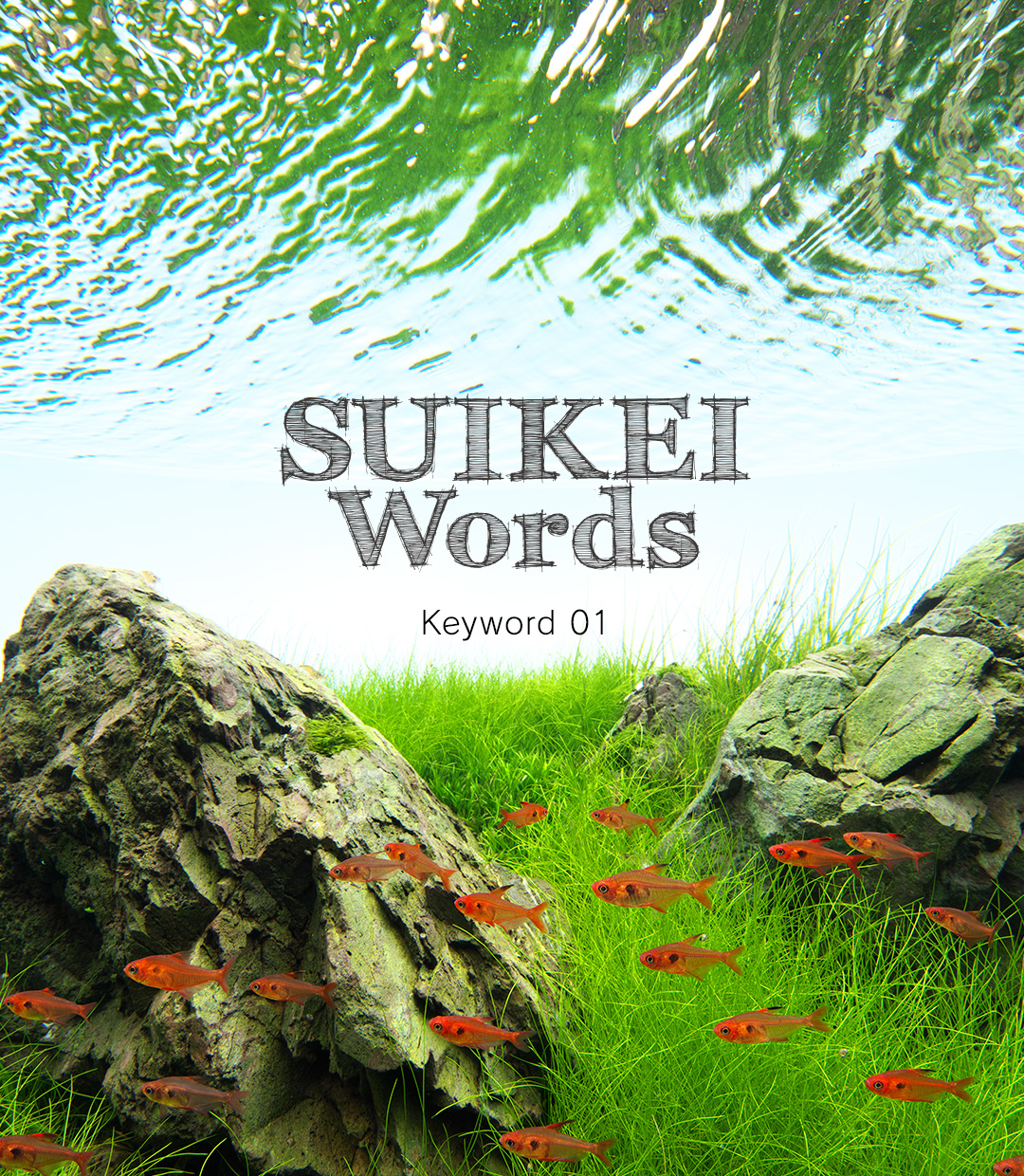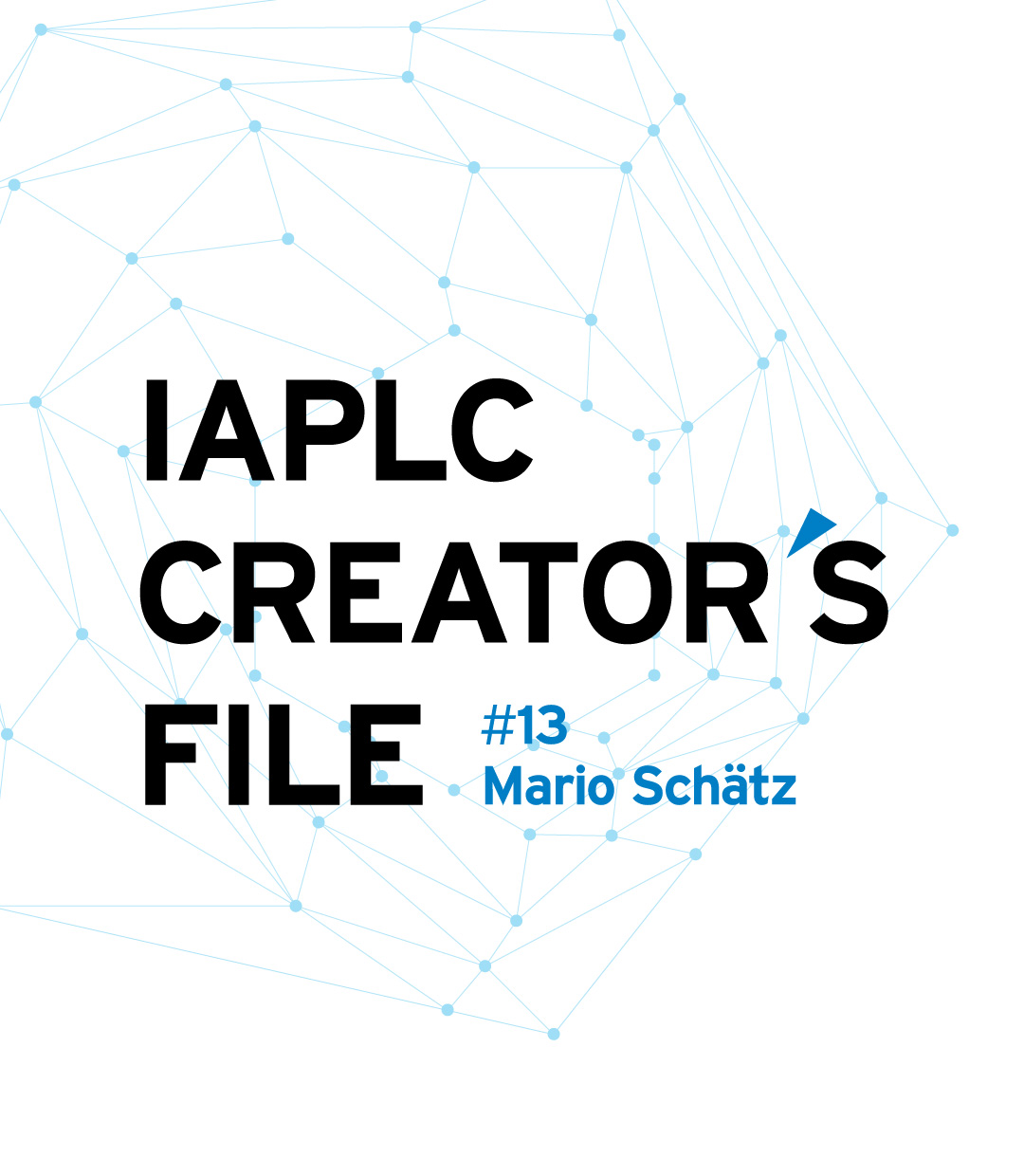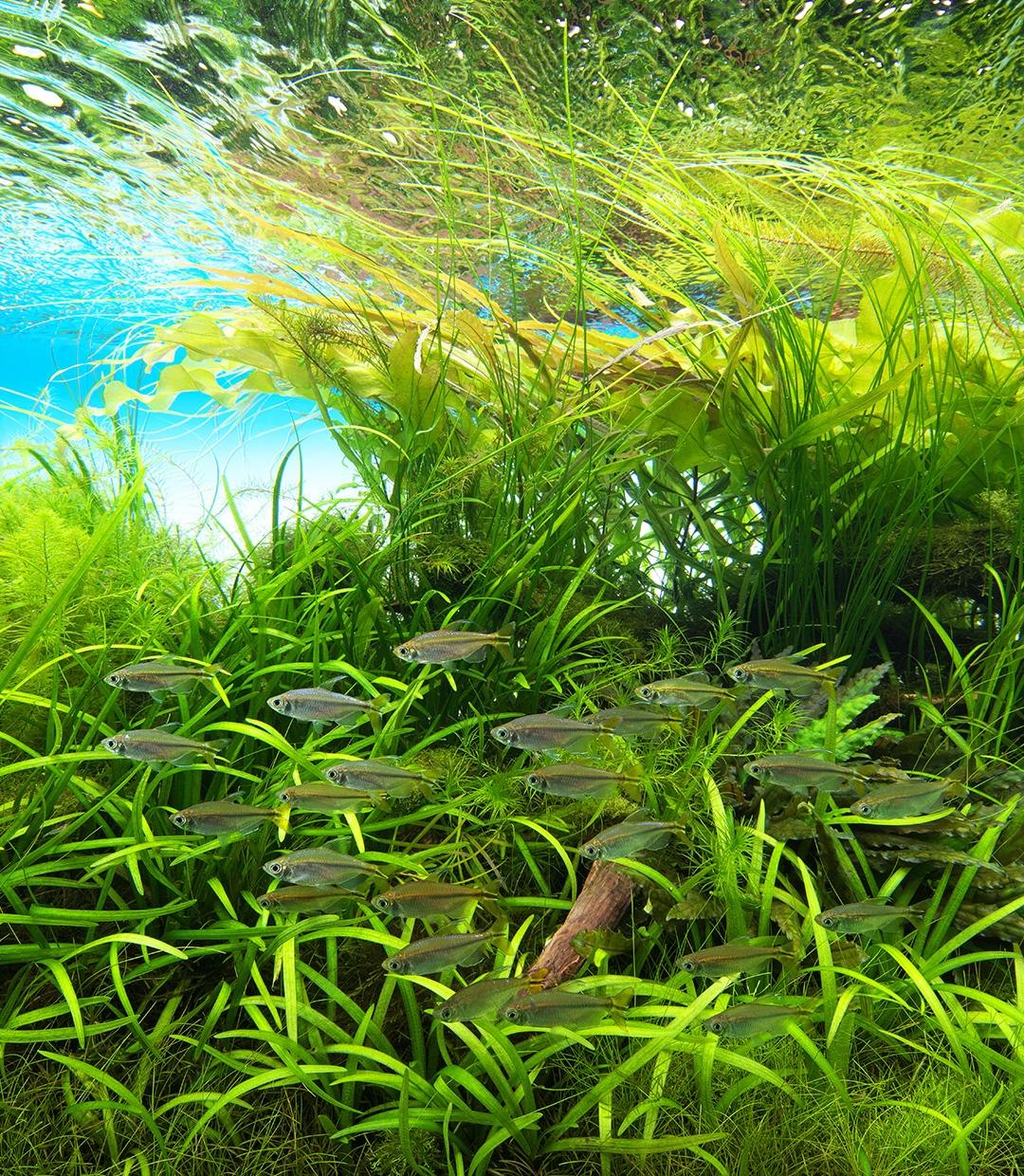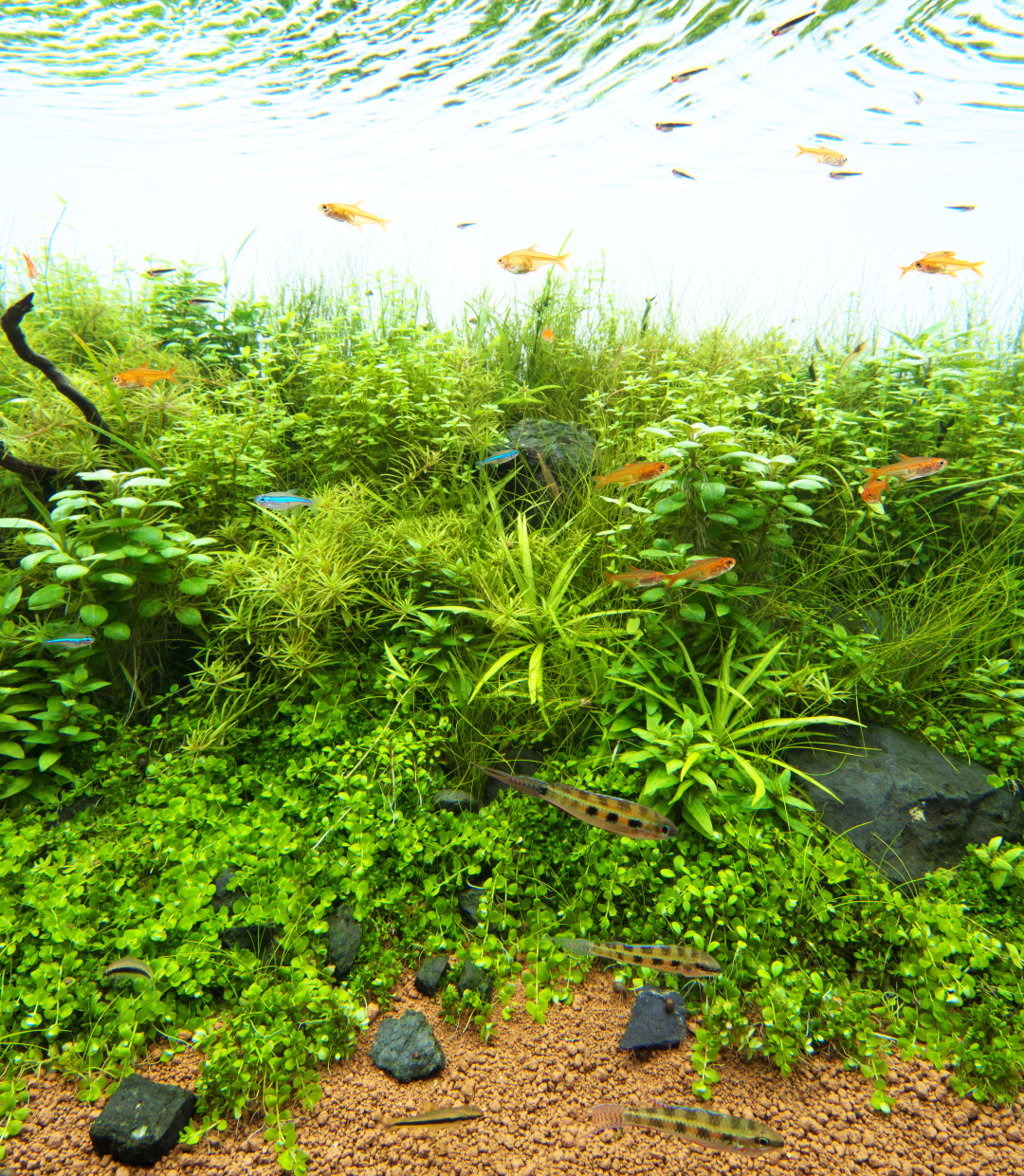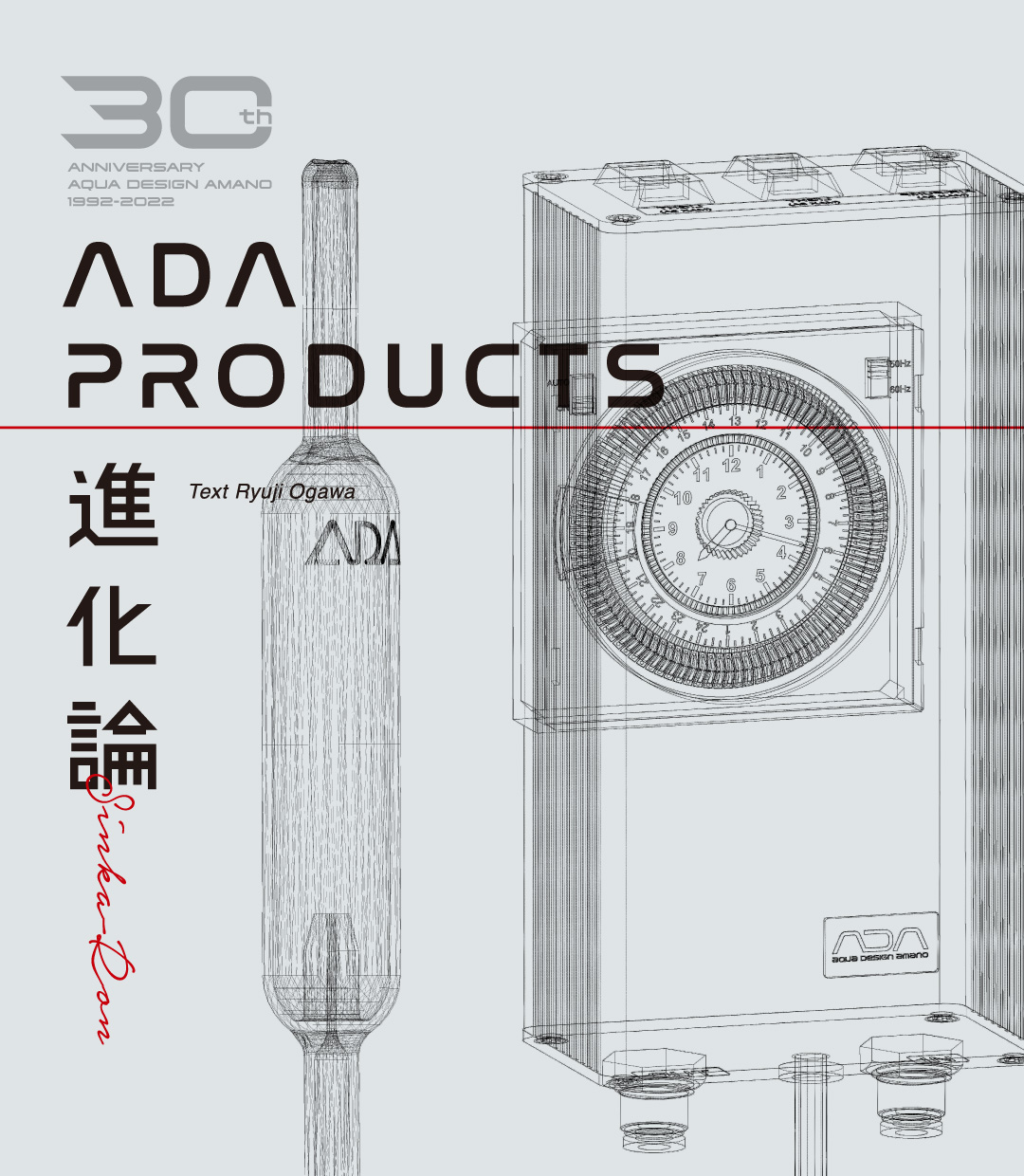SUIKEI Words Keyword 01 ‘Layout composition – Iwagumi’
To design beautiful aquascapes, there are basic points to bear in mind. In this column, the Suikei creators will explain and illustrate each point as a keyword. Let’s deepen our knowledge of aquascaping!
The composition of an Iwagumi layout is created by arranging rocks. Because it can be done simply by placing rocks, having a good aesthetic sense is required. Understanding the basic structure is the first step in aquascaping to create a well-balanced composition. Try making a beautiful aquascape design in accordance with the examples discussed here.
Radially arranged stones
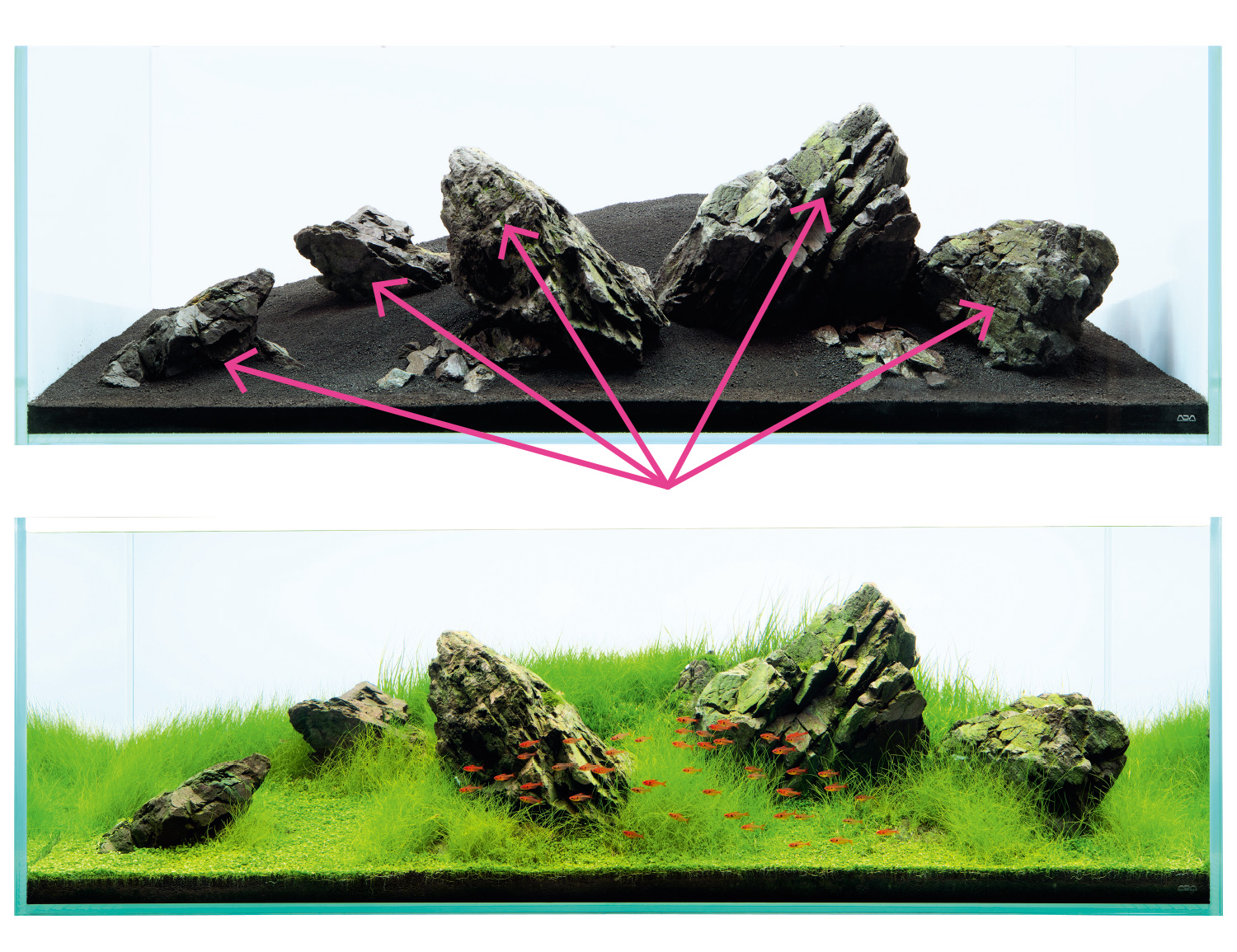
Make a natural-looking composition by tilting rocks
Place stones as if drawing radial lines from a preselected point. The composition will look more natural by turning the rocks to all different directions. Make an arrangement with different sized rocks to give it rhythm and a sense of continuity while keeping it from being too monotonous.
Place stones as if drawing radial lines from a preselected point. The composition will look more natural by turning the rocks to all different directions. Make an arrangement with different sized rocks to give it rhythm and a sense of continuity while keeping it from being too monotonous.
Sanzon Iwagumi style
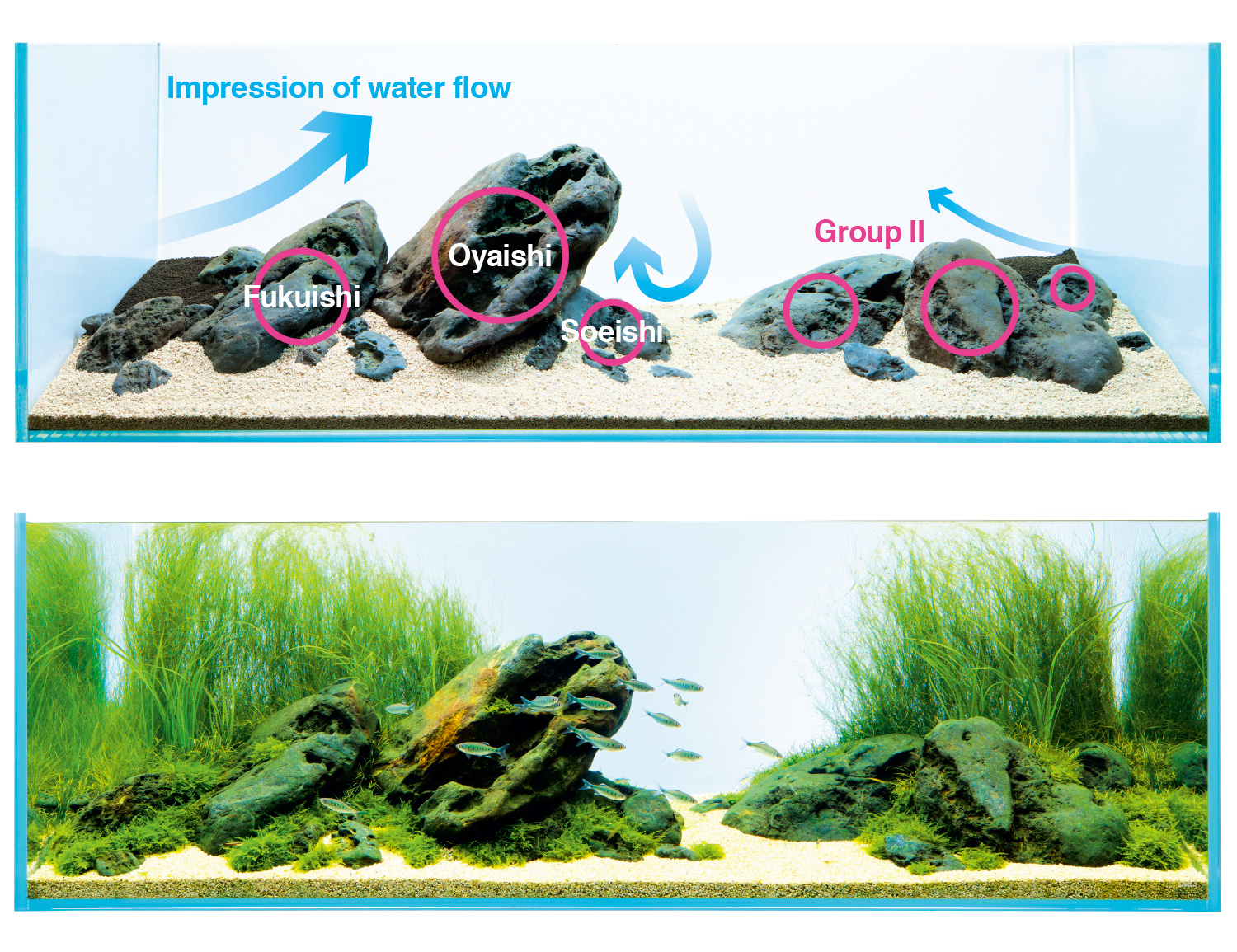
It is a style of an Iwagumi layout which consists of a set of 3 fundamental rocks; the main stone (Oyaishi), the secondary stone (Fukuishi) and the tertiary stone (Soeishi). The selection of an Oyaishi is especially important as it determines the direction of a layout. An Oyaishi is placed at an angle to give the impression of water flow and the strength, and subsequently the size and positioning of other stones are decided. Plan out the Group II and III according to the tank size.
The hilly style
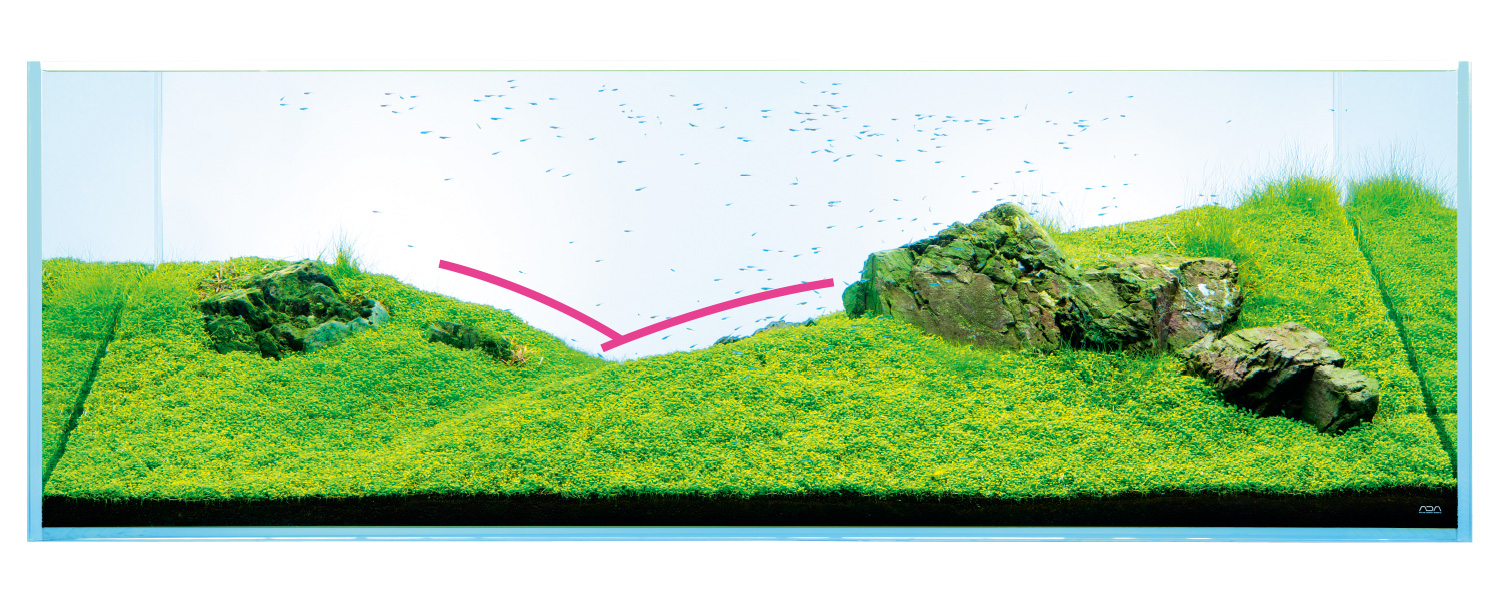
Imagining a continuous rock bed beneath it
The height of the soil layer and the rock arrangement are designed to express a vast landscape. By crossing the soil lines running from both sides, the composition gives an impression as if the aquascape goes deeper into the back of the tank. A sense of depth is added and the natural feeling is emphasized by using rocks with simple textures and arranging the rocks while keeping a continuous underground rock bed in mind.
The height of the soil layer and the rock arrangement are designed to express a vast landscape. By crossing the soil lines running from both sides, the composition gives an impression as if the aquascape goes deeper into the back of the tank. A sense of depth is added and the natural feeling is emphasized by using rocks with simple textures and arranging the rocks while keeping a continuous underground rock bed in mind.


